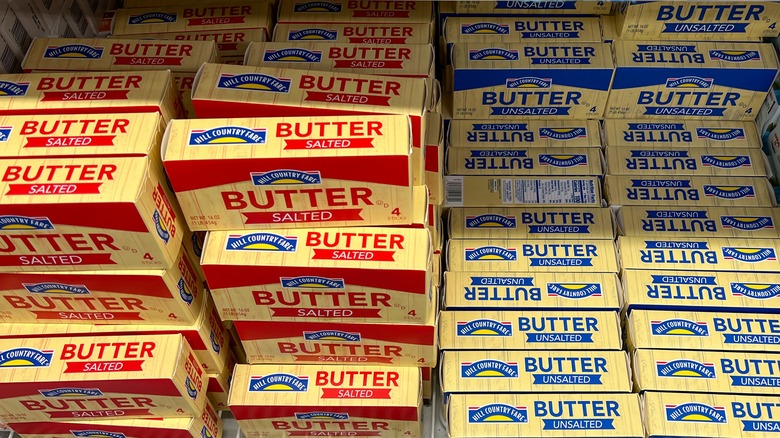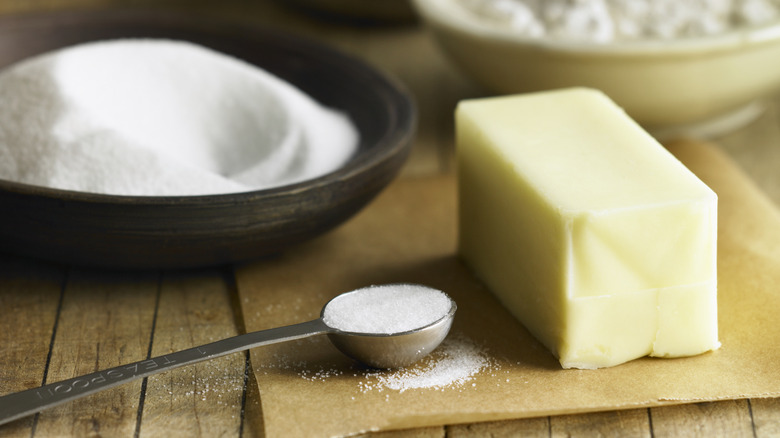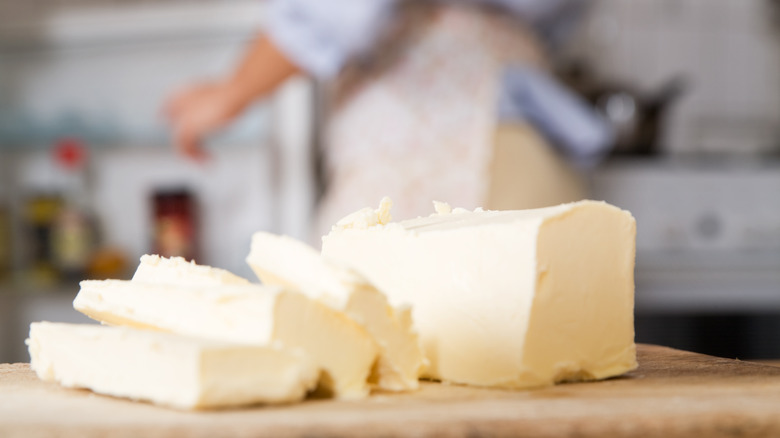Salted Vs Unsalted Butter: How To Know Which One To Use For Baking
Unlike cooking, which encourages risks and rulebreaking from home chefs, baking is an exact science, and even the slightest miscalculation can have dire consequences. While there are many essential rules to baking, one thing that often trips up new bakers is the difference between salted and unsalted butter.
It might not seem like a big deal, but using either salted or unsalted butter can significantly impact the outcome of your baked goods. For instance, as chef Erica Wides shared in a post on Instagram, too much salt can actually cause your baked goods to shrink and firm up. Moreover, the amount of salt in salted butter can vary between brands, meaning you won't know exactly how much you're adding. For this reason, unsalted butter is generally recommended for baking (and general cooking) because it gives you more control over how much salt is added.
Historically, salt was used to improve the flavor of inferior cream. While this isn't common today, salted butter remains a staple dairy product, particularly for slathering on biscuits or pieces of toast. Just try to keep it out of your baking unless a recipe specifically calls for it.
The difference between salted and unsalted butter in baking
Even if you know how to buy the best butter at your supermarket, it's easy to overlook the major impact salted and unsalted butter have on taste, especially in baking. Salt is a common addition to many baking recipes as it can improve flavor, help condition dough, and aid fermentation. Unsalted butter is often used by bakers precisely because it gives them a blank slate to work with. Unfortunately, if you don't know how much salt is in your salted butter and you add more, the balance can be thrown off, and no one wants a salty cake.
That said, making delicious baked goods with salted butter isn't impossible. For instance, Land O'Lakes recommends baking scones, cakes, and cobblers specifically with its salted butter brand. However, while the USDA states that there are typically 643 milligrams of salt in a 100-gram serving, there are no strict limits that companies have to adhere to. So, if you're following a recipe that calls for salted butter, check to see if it recommends a brand to use.
While most recipes will specify whether to use salted or unsalted butter, if you run into a recipe that calls for butter, it's recommended to use unsalted butter by default. Remember that an undersalted baked sweet treat will always taste better than one with too much salt.
Substituting salted and unsalted butter for baking
If the sudden urge to bake something strikes you, but you have the wrong kind of butter for the recipe you're eager to try, don't worry because salted butter can be swapped for unsalted and vice versa. To substitute salted butter for unsalted, increase the salt in the recipe by ¼ teaspoon for every ½ cup of butter you use. Around ¼ teaspoon of salt is the average in salted butter, so this will make up the difference. On the other hand, if your recipe calls for unsalted and all you have is salted, decrease the amount of salt by ¼ teaspoon per ½ cup of butter.
Alternatively, if you don't have butter or can't eat butter for dietary or ethical reasons, there are many viable substitutes you can choose from. For instance, unsweetened applesauce is a popular butter substitute, as is vegetable shortening, which can replace unsalted butter one-for-one with a similar consistency. However, it's important to learn how to choose the best butter substitute before adding something randomly.


